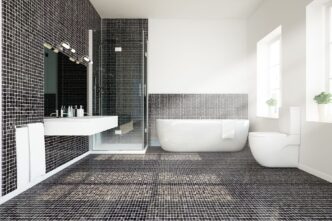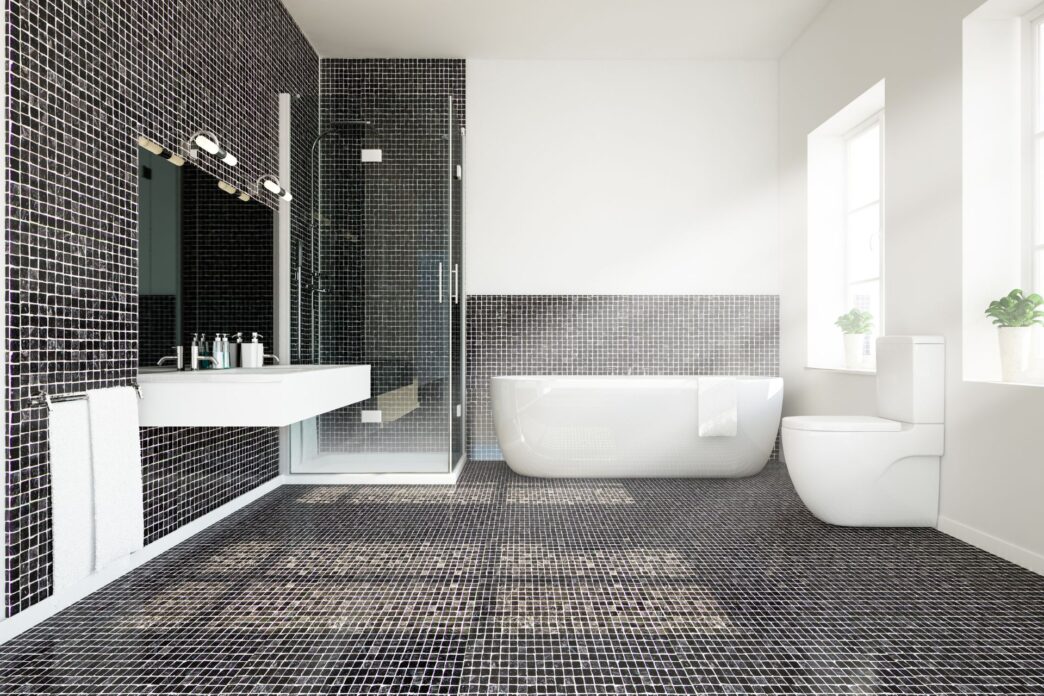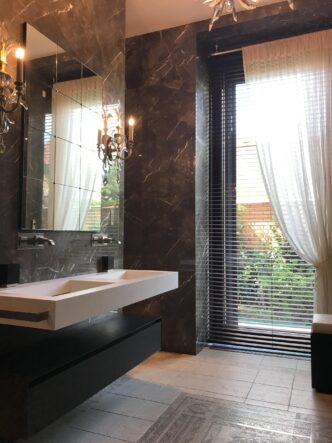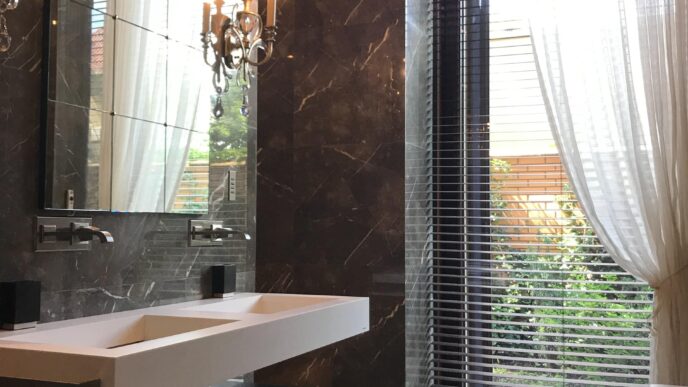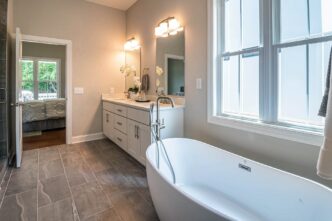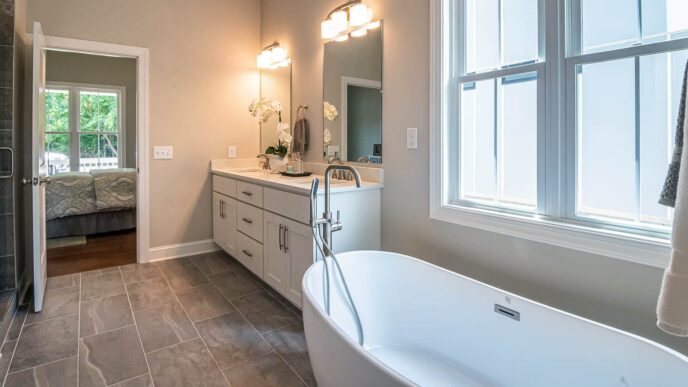Choosing the wrong bathroom tiles can be a slippery slope—literally! Beyond potential safety hazards, the wrong tile choice can lead to constant maintenance headaches, outdated aesthetics, or even costly repairs down the line.
This guide will explore common bathroom tile mistakes that hamper a homeowner’s bathroom renovation journey.
Choosing the Wrong Material: A Key Point In Bathroom Tile Mistakes
The world of bathroom tiles is vast, with a myriad of materials to choose from. However, not all tiles are suitable for every bathroom area. A common blunder is selecting materials that don’t hold up well in damp environments. For example, porous tiles like limestone or travertine can absorb water and lead to mold growth, making them unsuitable for shower areas.
Instead, opt for non-porous materials like ceramic or porcelain, which are designed to withstand high moisture levels. These materials are resistant to mold and mildew and easy to clean and maintain. For shower floors, consider textured tiles that provide extra grip, reducing the risk of slips and falls.
Ignoring Proper Waterproofing: An Often Overlooked Aspect
Many homeowners unintentionally focus more on aesthetics rather than the crucial aspect of waterproofing. This oversight can lead to significant water damage, particularly in high-moisture zones like showers and bathtubs.
To prevent this, work on a robust waterproofing strategy with your contractors (like adding a waterproof membrane underneath the tiles). Quality waterproofing acts as a barrier, protecting your walls and floors from water seepage, which can lead to structural damage and costly repairs.
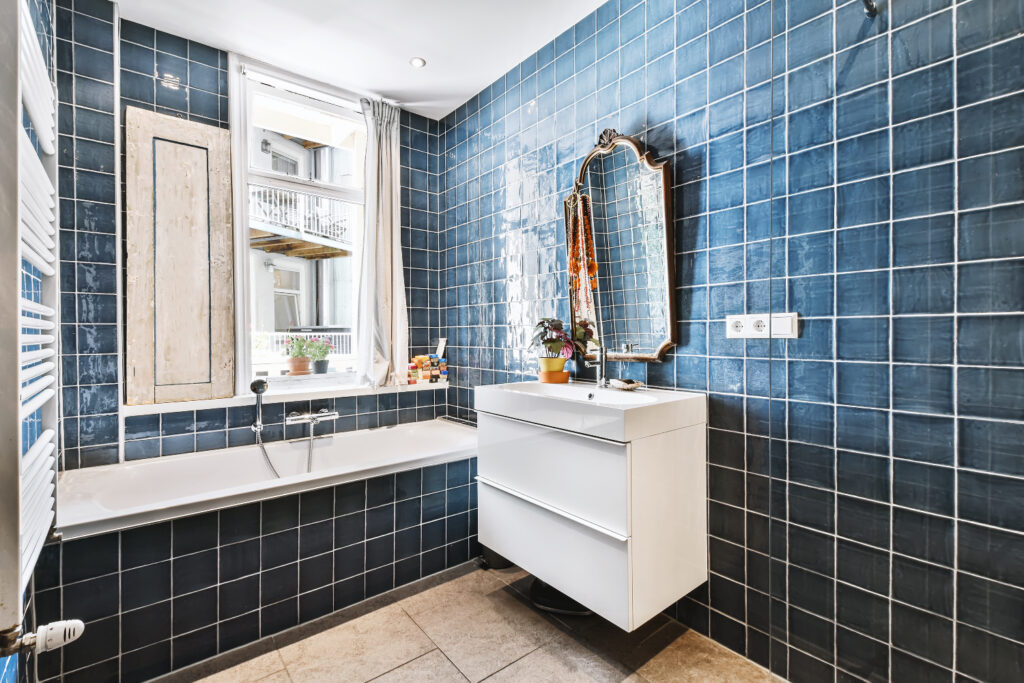
Inconsistent Grout Choices
Grout plays a significant role in your tiled surfaces’ overall look and longevity. The wrong grout choice can make even the most beautiful tiles look unappealing. A common bathroom tile mistake is selecting a grout color that clashes with the tiles or choosing a type that can’t withstand the bathroom’s moisture levels.
When choosing grout, consider both aesthetics and functionality. A color that complements your tiles can enhance the overall design. At the same time, a high-quality grout like epoxy can resist stains and moisture, ensuring your grout lines stay pristine for longer.
Incorrect Tile Layout: Planning is Key
A well-planned tile layout is essential for a visually appealing bathroom. A common mistake is not considering the tile size and room dimensions, leading to awkward cuts and a disjointed appearance.
Start by planning your layout on paper or using design software. Consider how the tiles will align with fixtures and features like windows or doors. Avoid using small tile fragments at the
edges of the room, as these can disrupt the flow of the design. Instead, aim for a balanced layout where the tiles are evenly distributed. This attention to detail will not only enhance the room’s aesthetics but also showcase a level of craftsmanship that adds to the overall value of your renovation.
Neglecting Proper Installation: Avoiding Bathroom Tile Mistakes
The final, and perhaps most critical, mistake to avoid is improper tile installation. Many homeowners opt for DIY solutions or hire inexperienced contractors to save costs. This decision can lead to numerous issues, such as uneven tiles, lippage, or improper sealing, which not only detract from the bathroom’s appearance but can also lead to long-term maintenance issues.
Investing in a professional tile installer is essential. Experienced professionals understand the nuances of tile laying, from ensuring a level surface to applying the correct amount of adhesive. They also know how to handle different tile materials and shapes, ensuring a flawless finish that stands the test of time.
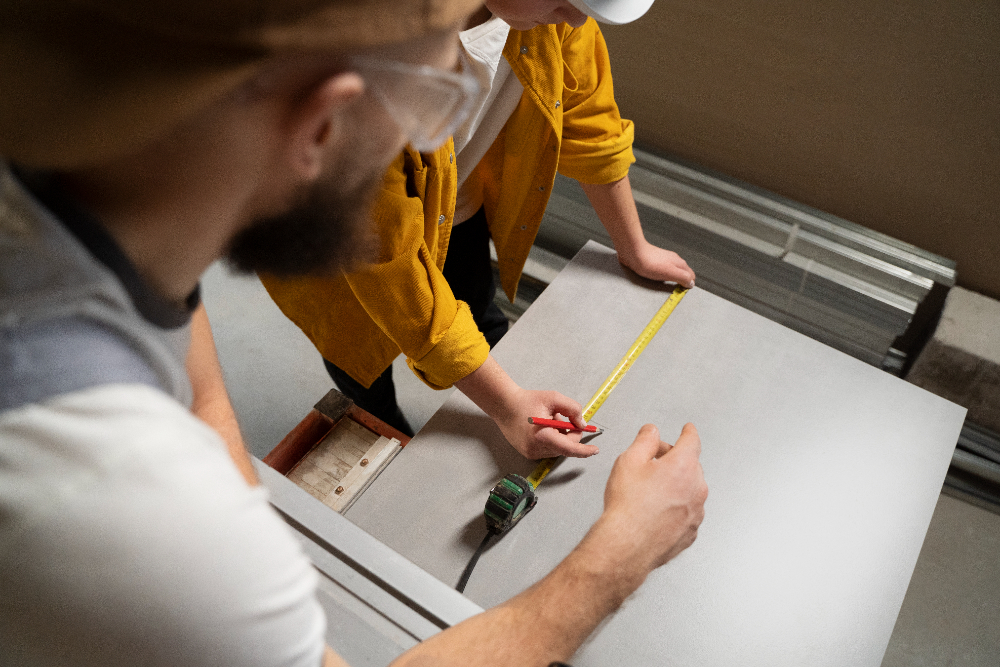
Avoiding these common bathroom tile mistakes makes it possible for you to enjoy the renovation results longer (and with less money going out of pocket).
We’re bringing the conversation to life on Instagram, sharing even more tips, tricks, and visual inspiration for your bathroom renovation projects. Join our growing community of home improvement enthusiasts and get exclusive access to real-life examples, before-and-after transformations, and expert advice.
Frequently Asked Questions
Question 1: Can I use wooden tiles in my bathroom?
Wooden tiles can be used in bathrooms, but it’s important to choose those specifically designed for wet areas, such as waterproof and moisture-resistant varieties. Always ensure they are well-sealed to prevent water damage.
Question 2: How often should bathroom grout be replaced?
Grout longevity varies depending on its exposure to moisture and cleaning products. Typically, it’s a good idea to inspect and replace grout every 5 to 10 years, or when signs of wear and damage, such as cracking or discoloration, appear.
Question 3: Is it necessary to tile all the walls in a bathroom?
Tiling all the walls is not a necessity. It depends on your design preference and budget. Some choose to tile only wet areas like the shower, while others may opt for half-wall tiling with paint or wallpaper on the upper parts.
Question 4: What’s the best way to clean bathroom tiles and grout?
For regular cleaning, use a mild detergent and warm water. For grout, a baking soda paste applied with a brush can be effective for removing mildew and stains. Avoid harsh chemicals that can damage the grout and tiles.
Question 5: How do I choose the right tile size for my bathroom?
Consider the size of your bathroom and the look you want to achieve. Larger tiles can make a small bathroom appear bigger, while smaller tiles work well for adding texture or creating specific patterns. Ensure the tile size complements the space without causing excessive cuts.
